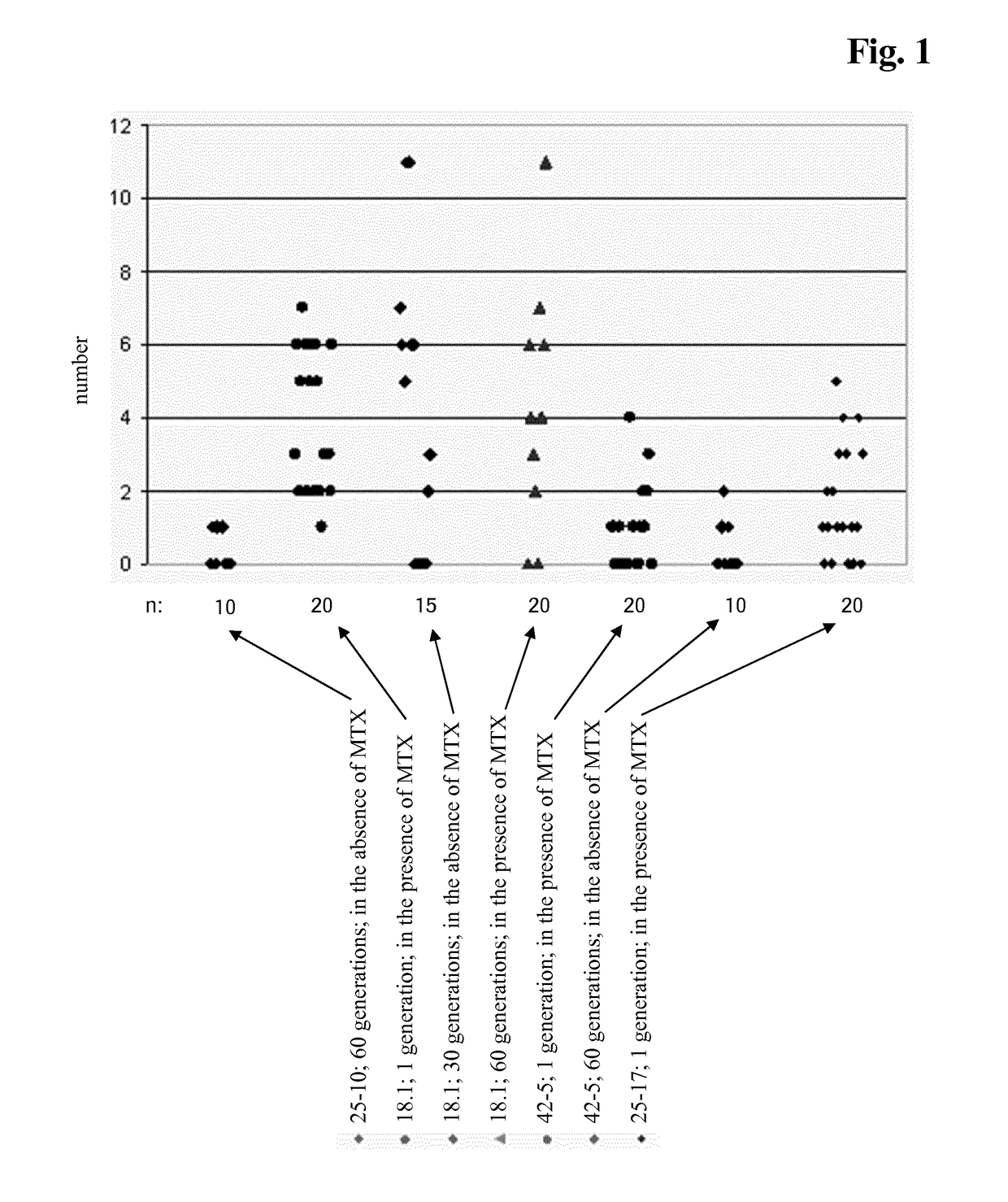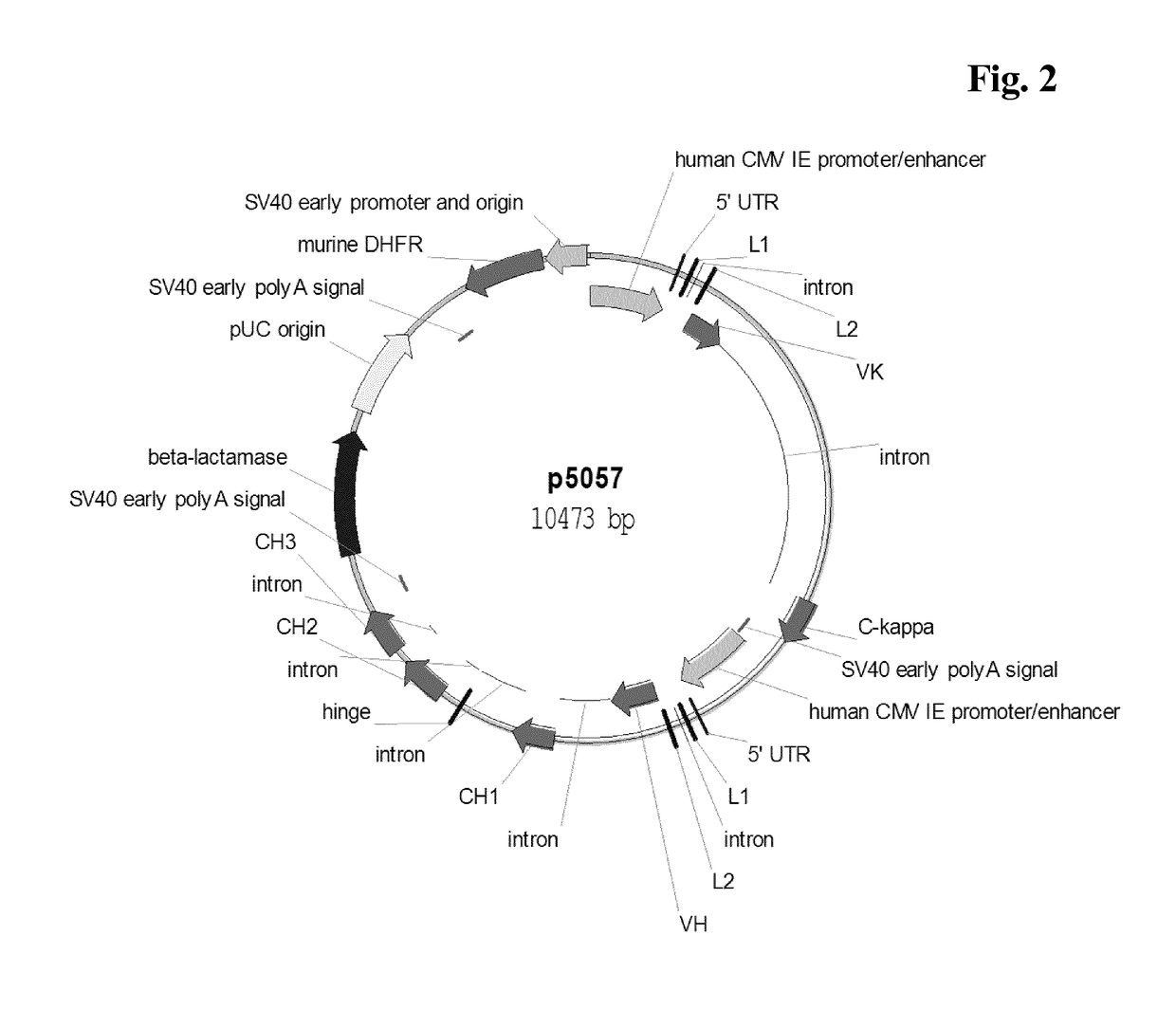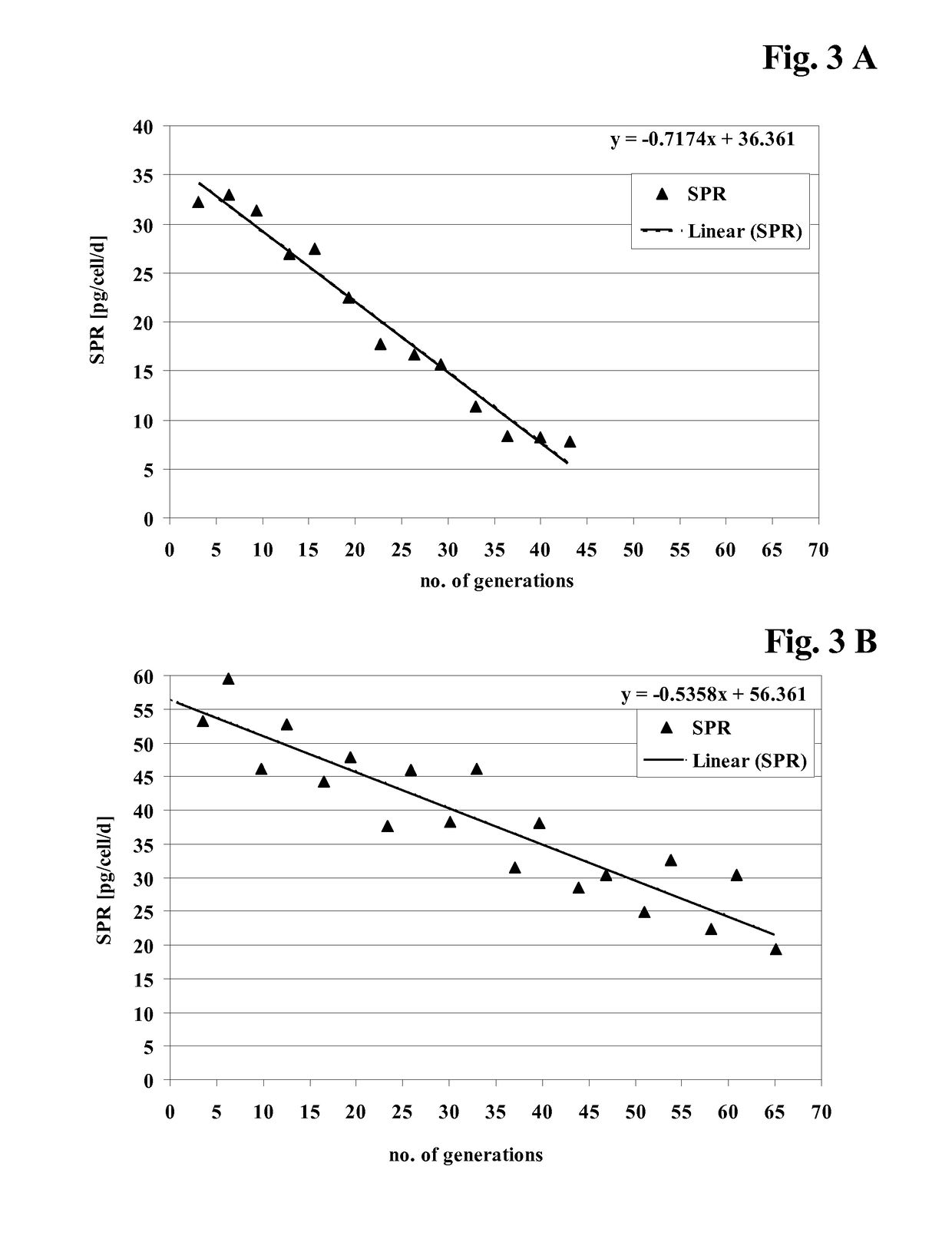Method for the Selection of a Long-Term Producing Cell using Histone Acylation as Markers
a long-term producing cell and histone acylation technology, applied in biochemistry apparatus and processes, instruments, hybrid immunoglobulins, etc., can solve the problems of insufficient stability prediction, weak correlation reported by barnes et al., and gradual loss of productivity in long-term cultur
- Summary
- Abstract
- Description
- Claims
- Application Information
AI Technical Summary
Benefits of technology
Problems solved by technology
Method used
Image
Examples
example 1
General Techniques
[0283]Solutions
CHIP Cell lysis buffer20 mM Tris-HCl pH 8.085 mM KCl0.5% NP40 (Nonident P-40 / octylphenolpolyethoxyethanol)double distilled H2ONuclei Lysis buffer50 mM Tris-HCl pH 8.010 mM EDTA pH 8.01% SDSdouble distilled H2O1 tablet Roche Complete per 10 mlLow salt wash buffer0.1% SDS1% Triton X 1002 mM EDTA20 mM Tris-HCl pH 8.0150 mM NaCldouble distilled H2OHigh salt wash buffer0.1% SDS1% Triton X 1002 mM EDTA20 mM Tris-HCl pH 8.0500 mM NaClTE buffer10 mM Tris-HCl pH 8.01 mM EDTA(IP) Elution buffer50 mM NaHCO31% SDSdouble distilled H2OIP Dilution buffer0.01% SDS1.1% Triton X 1001.2 mM EDTA16.7 mM Tris-HCl pH 8.1 (8.0)167 mM NaClH2OIP Blocking BufferIP Dilution bufferBSASalmon Sperm DNARoche Complete Protease Inhibitor
[0284]Recombinant DNA Techniques
[0285]Standard methods were used to manipulate DNA as described in Sambrook et al., Molecular Cloning: A Laboratory Manual, Second Edition, Cold Spring Harbor Laboratory Press, Cold Spring Harbor, N.Y. (1989). The molec...
example 2
Generation of Recombinant CHO Cell Lines
[0403]Recombinant cell lines expressing a human antibody of class IgG were generated by stable transfection of CHO-K1 or CHO-DG44 suspension growing cells with a vector encoding the light and heavy chain of antibody comprising a human immunoglobulin kappa light chain and a human immunoglobulin gamma 1 or gamma 4 heavy chain. The vector further comprised a nucleic acid encoding murine dihydrofolate reductase (DHFR) or glutamine synthetase (GS). Light and heavy chain expression cassettes were both under the control of a human CMV major-immediate-early promoter and enhancer (SEQ ID NO: 01). Transfection of cells was either performed by nucleofection (Lonza Cologne GmbH or Amaxa Biosystems) or by electroporation using Gene Pulser XCell (BIO-RAD).
[0404]For example, CHO-K1 or CHO-DG44 suspension were transfected with linearized plasmid DNA, using the Nucleofector device in combination with the Nucleofector Kit V (Lonza Cologne GmbH, Cologne, Germany...
example 3
Long-Term Cultivation and Production
[0408]CHO cell lines obtained according to Example 2 were investigated for long-term productivity.
[0409]The cells were tested for phenotypic, i.e. production, stability for 35 to 70 generations in the absence of a selection agent. The cells were continuously cultivated in vented 125 ml shake flasks containing 50 ml medium without selection agent and diluted twice a week with fresh medium. Seeding density was 2 to 3×105 cells / ml. Prior to passage viable cell density and viability were determined. The age of the culture in generations at the end of each passage was calculated according to the following equitation:
a2=a1+ln(D2 / D1) / ln 2 (Formula 1)
with[0410]a2 [no. of generations]: age of the culture at the end of the passage,[0411]a1 [no. of generations]: age of the culture at the beginning of the passage i.e. age of the culture at the end of the previous passage,[0412]D1 [cells / ml]: viable cell density at the beginning of the passage,[0413]D2 [cells...
PUM
| Property | Measurement | Unit |
|---|---|---|
| Fraction | aaaaa | aaaaa |
| Frequency | aaaaa | aaaaa |
Abstract
Description
Claims
Application Information
 Login to View More
Login to View More - R&D
- Intellectual Property
- Life Sciences
- Materials
- Tech Scout
- Unparalleled Data Quality
- Higher Quality Content
- 60% Fewer Hallucinations
Browse by: Latest US Patents, China's latest patents, Technical Efficacy Thesaurus, Application Domain, Technology Topic, Popular Technical Reports.
© 2025 PatSnap. All rights reserved.Legal|Privacy policy|Modern Slavery Act Transparency Statement|Sitemap|About US| Contact US: help@patsnap.com



